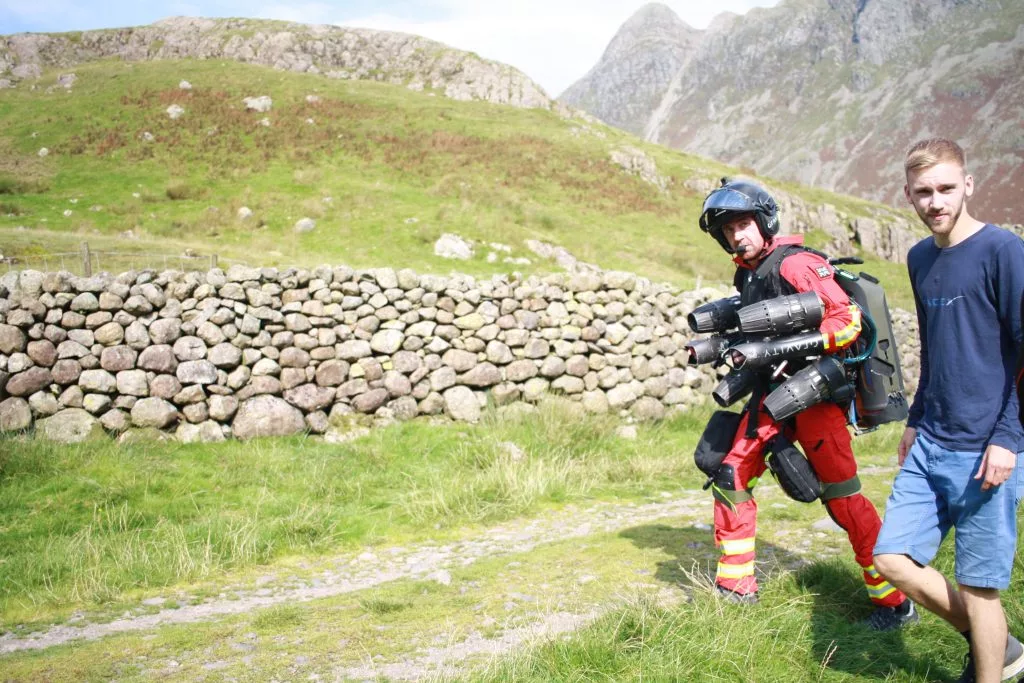Richard Browning's Jet Suit may have a lock on cool, but now it's looking for practical applications. Britain's Great North Air Ambulance Service (GNAAS) has collaborated with Gravity Industries on a test flight at the Langdale Pikes in the Lake District to see if the flight system could be used by paramedics in wilderness areas.
The Lake District in northwest England is one of the most beautiful areas in the British Isles but it's also one of the most rugged, with many places where getting injured could be a pleasant walk into a life-threatening emergency. To help deal with this, GNAAS operates three helicopters in the north of England that evacuate dozens of patients a month. However, even this service is limited as to where it can go so many casualties can only be reached on foot, which can waste precious time.
Based on reports about Browning's Iron Man-like technology, Andy Mawson, director of operations and paramedic at GNAAS, hit on the idea of a Jet Suit paramedic. This was followed by a year of talks between GNAAS and Gravity Industries, leading to the recent test flight.
Invented by Browning and manufactured by Gravity Industries since March 2017, the Jet Suit uses five mini jet engines (two attached to the hands and one in a backpack) that generate 1,050 horsepower and allow it to reach a top speed of 85 mph (137 km/h) and provide a flight time of up to 10 minutes.

That may not seem like too much air time but in the recent test where Browning acted as chief test pilot, he flew from a valley bottom to a simulated casualty site on The Band hill, near Bowfell, covering the distance in 90 seconds instead of the 25 minutes that would be needed to reach it on foot. Browning then played the part of a medic, providing simulated treatment of the casualty before calling in a medevac helicopter.
The two organizations are now working on which steps to take next in their collaborations.
"In a time in healthcare when we are exhausted with COVID and its effects, it’s important to still push the boundaries," says Mawson. "Our aircraft will remain a vital part of the emergency response in this terrain, as will the fantastic mountain rescue teams. But this is about looking at supplementing those resources with something completely new.
"We think this technology could enable our team to reach some patients much quicker than ever before. In many cases this would ease the patient’s suffering. In some cases, it would save their lives."
The video below shows the field test.
Source: GNAAS





